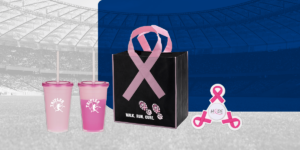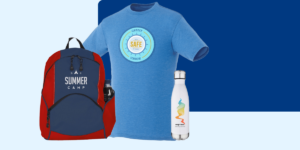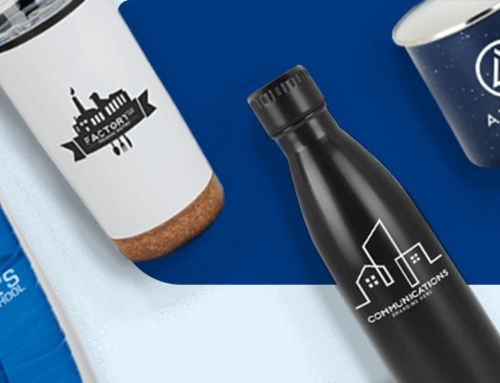09/10/2010
Five Simple Rules for Teen Marketing
Teens have plenty of cash and are ready to buy – but don’t break one of these rules or they’ll take their business elsewhere.
Think the teen market is worth tapping into? You’d be right. According to the report, “The Teens Market in the U.S.,” by market research publisher Packaged Facts, the number of products bought by and for American teenagers will increase from an estimated $189.7 billion in 2006 to $208.7 billion in 2011.
No surprise? It might be when one considers that the amount of 12-17 year olds in the U.S. is expected to decrease by 3% in that time.
“Teens are the type of consumer that all adults wish they could be,” says Matt Alderton, a media consultant and principal of Slivers and Scribbles Media, a Chicago-based firm. “By and large, they don’t have financial responsibilities of any sort. They don’t have mortgages. They don’t have utilities. They don’t have groceries. They do, however, have plenty of cash, even if it’s not their own. As a result, teens have more disposable income than perhaps any other consumer demographic in the United States.”
In fact, they have approximately $156 billion worth of it, according to teen research expert TRU. What’s more, teen spending money, which is made through jobs, allowances from parents and gifts, will increase an estimated 3.5% annually through 2011, says the Packaged Facts report.
How, then, does a promotional products distributor go about breaking into this market? Here are five simple rules for selling to teens.
1. Appeal to the teen, not the adult.
“Teens make purchasing decisions differently than adults do,” Alderton says. “While adults tend to be motivated by cost and convenience, teens are motivated by popular culture and peer-driven trends. Adults are value-oriented; teens, however, are all about the cool factor.”
“Marketing and selling to teens, therefore, requires different media and different messaging. You can’t approach them in the same way or with the same sales pitch as you do their parents.”
When Patriot Marketing Group, a promotional products distributor, was called upon last year by SmileCare Dental Group to come up with a program that would draw more teens to the dentist chair, COO Dennis Borst quickly remedied a bad situation.
SmileCare facilities in California, Arizona and Nevada were originally offering $200 off to would-be clients who needed to be fitted for braces. It was a disaster.
“It’s all about targeting the audience with a reward that will call them into action,” Borst says. “The kids don’t care if their mom or dad gets $200 off, but a $69 iPod Nano blew us through the roof, because all these kids want an iPod.”
Once the iPod Nano was introduced by Patriot as a reward for a visit to the dentist, SmileCare cashed in with over 1,000 new patients – not to mention the fact that SmileCare saved $131 per promotion per customer.
“With adults, you could have done a program with something more big-picture that would be toward the family, whereas these kids are smart enough to where they’re going to say, ‘Hey, I’m the one who has to go through the pain every couple weeks. What’s in it for me?'”
Borst says it wasn’t enough to give away just any gadget. “If it ain’t an iPod, it ain’t what they want,” he says. “With teens, more than ever you need to be specific because they want to be part of the group. You’ve got to pay attention to what is hot in their lives.”
2. Realize how smart they are.
“Acknowledge that teens are smart,” Alderton says. “They’re not kids, so don’t talk down to them. Instead, engage them with mature messages and grown-up experiences. That, more than anything else, will attract and impress the teen market.”
Jodi Rodney, owner of Joads Original, opened her distributorship with her husband a year ago. They have five children, three of whom are teens. Their most popular item to date is “The Hat.”
“It was a cross between a crocheting accident that my children loved and a fleece hat that we purchased at Disneyland,” Rodney says. “I asked a company in Minnesota to send me a sample, and The Hat was born.”
Students in a high school band originally rejected the idea of The Hat for a fundraiser, not due to the design but because of the cost. “The adults thought the price was fair and were ready to go, except they left it up to a vote by the students,” Rodney says. “One student was convinced that the hats could be made for less, and one student in any given crowd can usually sway the majority vote.”
“I have gone straight to the students since then. Then, when they are excited about selling The Hat as a fundraiser, I offer to approach the adults.”
Obviously, teens typically aren’t the final decision-makers in the selling process – but they always are in the purchasing process. And teens will thumb their noses at a product they are certain they don’t need, no matter how solid the advertising pitch.
“The biggest mistake is trying to motivate a teen to care about and spread the word about products and services irrelevant to them,” says John Roush, vice president of promotional marketing for WonderGroup, a Cincinnati-based company that specializes in marketing to kids, tweens, teens and parents. “We have seen companies spending money trying to influence teens to spread the word about cleaning products, certain food products and other items. This doesn’t work because they just don’t care.”
“The single biggest mistake that businesses make when they’re trying to court teen consumers is lying to them,” Alderton says. “Teens have an excellent sense of smell, and they can smell a rat at one end of the mall all the way from the other. If you’re insincere or phony or false, teens will know it. The best strategy for marketing and selling to teenagers, then, is to be as authentic as possible. Be who you are and embrace teens for who they are.”
3. Recognize that teens have changed.
Twenty years ago, there were no iPods, no cell phones and no Internet access. Times have changed, and so have teens.
“Teens are not someone you’d send a direct mail piece to,” Borst says. “With teens, you’d have to get them electronically or through texting. You have to approach them in a way they would find relevant.”
John Borg, owner of Wishbone Creative Group, a promotional products distributor, recognizes just how rapidly the Information Age has altered the market. “The 16 year old today is much different than the 16 year old five or 10 years ago,” he says. “They are totally wired to information and media 24/7. They are much more sophisticated and comfortable with technology and they are multi-taskers. They IM, they text, they e-mail, they blog, they use the phone. This is the MySpace and YouTube generation.”
According to the Packaged Facts survey, 90% of teens said they use a computer at home or at school and 51.6% said the Internet has changed the way they use their free time. “I’ve seen the impact of the speed of communication and mobility of the market,” Borg says. “It helps to understand the vernacular, music, fashion and the general vibe of this target.”
Borg has been working with Fuzz, a Web 2.0 client that acts as a social network and digital label targeted to all genres of indie music fans and bands. Wishbone helped Fuzz develop its branding, positioning and Web presence, and also collaborated on promotional strategy. “This is a quirky and somewhat edgy target because it’s across different genres – rock, hip-hop, indie, electronic, punk, funk, metal, Americana – hard to pin down,” he says.
Borg says Wishbone played off the digital revolution taking place in the music space, and wrote an edgy manifesto as the company mission statement. “Our approach in building the brand promotionally has been to use products that are universally popular and useful and reach them where it is real and relevant – music events, festivals, clubs, college campuses and cafes.”
Wishbone also helped Fuzz open an online apparel store with a broad variety of items, such as T-shirts, hoodies, branded knit hats and wristbands, along with dog tags, buttons and guitar picks to keep with the music theme.
Borg says the attempt at widespread appeal is indicative of another change in teens in recent decades. “They are not as typecast as in the past,” he says. “There is more assimilation across boundaries – sports, music, fashion, technology, even genders. Rather than being part of the crowd, many pride themselves on being individuals.”
4. Take time to listen to them.
“Among the biggest challenges are in understanding teens’ wants and needs and what motivates them,” Roush says. “Miss these and you are wasting 100% of your money.”
With that in mind, Pam Hendrix, owner of Customized Promotional Products, has something to say about teens that may be a bit surprising, even to some who sell to them.
“Teens are concerned about life issues,” she says. “They are very idealistic. Most want to do the right thing and have your respect. Treat them like the important individuals that they are. Ask their opinion, and then listen.”
Hendrix reiterates how vital it is to know what interests teens, rather than telling them what they should be interested in. They may not be adults, but they are old enough to have formed strong opinions on a number of issues. “When you are selling to adults, you talk to them about what they want and like,” Hendrix says. “It is the same with teens. I approached my teenage nieces and nephews to find out what was hot and what was not. You can’t tell them what they want. You cannot talk to them like you know what is best and they don’t. It must be a fact-finding conversation. Let them share their thoughts.”
Hendrix recently dealt with an education-oriented client that wanted to convince teens that casual sex is a bad idea. The slogan of the campaign was: The Choice Is Yours. Choose to Know. Hendrix’s job was to plastic those words on the provided promotional items.
“We wanted to keep those words in front them,” Hendrix says. “Our choice this time was T-shirts and dog tags. The teens we consulted thought that dog tags were cool. They would wear them. It seemed especially timely with many of our family members fighting in Iraq.”
Hendrix also remembers, however, that teens’ desire for cool stuff is just as important as their good intentions. That’s why she?s planning on using cell phone accessories for an upcoming teen-related campaign.
“If they want it, they get it,” she says. “Even better, they get their friends to want the products, too.”
5. Teens will spend their money – somewhere.
Packaged Facts reports that teen’s income will increase from $79.7 billion in 2006 to $91.1 billion in 2011, a 14.4% jump. Currently, 12-14 year olds have $2,167 to spend per year, while 15-17 year olds have nearly twice that much ($4,023), according to the report.
And teens have no mortgages, insurance premiums or utilities to pay. “They have money and no bills,” says Hendrix.
“My advice to people that don’t target teens is that teens will find something they want in just about every store they go in,” Rodney says. “Teens are on a budget for sure, but if they have money they will usually spend it on one of the first things they find for sale.”
Roush cites a Harris poll that estimates the annual spending of teens to be close to $100 billion. “If the product interests them, a marketer should pursue them – but don’t bother if they don’t really care about the product,” he says. “They are also very highly influential in family purchases as well, especially travel.”
“Money and success drive them, so college and anything that can get them cash or a leg up can generate attention and interest.”
Alderton says many companies have unfairly mischaracterized teens, and they have done so at their own peril. “Businesses have often classified teens as liabilities,” he says. “Retailers, for instance, don’t want them around because they assume they’ll loiter and shoplift. Stereotypes, however, will hurt your business more than help it.”
“The fact is, teens have money, they’re looking for places to spend it, and if you don’t invite them to spend it with you, they’ll spend it with your competitors.”
Reprinted with permission of Successful Promotions, copyright 2007






